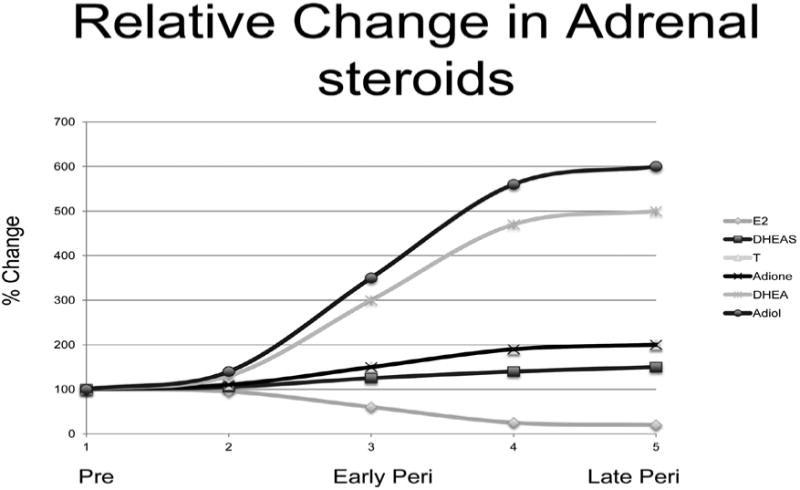Figure 2.

Schematic of maximal circulating levels of the sex steroids across the menopausal transition. During the MT all women experience a modest, similar decline in circulating E2 levels with the steepest decline occurring in the four years surrounding menopause. In contrast approximately 85% of all women experience an increase in circulating androgens throughout the complete menopausal transition. While all five androgens rise, the greatest increase found in Adiol and DHEA which can increase over 500%. Adiol reaches effective biological levels but only in some women This wide range in circulating Adiol concentrations that are associated with the increase in adrenal steroid production during the MT have broad and mixed steroid receptor signaling implications. The ER beta signaling potential of Adiol has particular significance during and after the menopausal transition (MT) since ER beta signaling can impede ER alpha signaling. This suggests that the ER alpha versus ER beta tissue responses to Adiol may be as important, if not more important, than the classic E2/T balance that has previously dominated endocrine studies of the MT. Dehydroepiandrosterone (DHEA) and androstenediol (Adiol) reach the highest circulating levels in some women which can be 5-8-fold above levels observed prior to the menopausal transition. Testosterone (T, colors) and androstenedione (Adione) rise only 2-3 fold during the same interval. Dehydroepiandrosterone sulfate (DHEAS) rises only 15-20%. Estradiol (E2) measured on day 5 of the menstrual cycle falls slightly just prior to and following the last menstrual period. Adapted from McConnell et al.5
